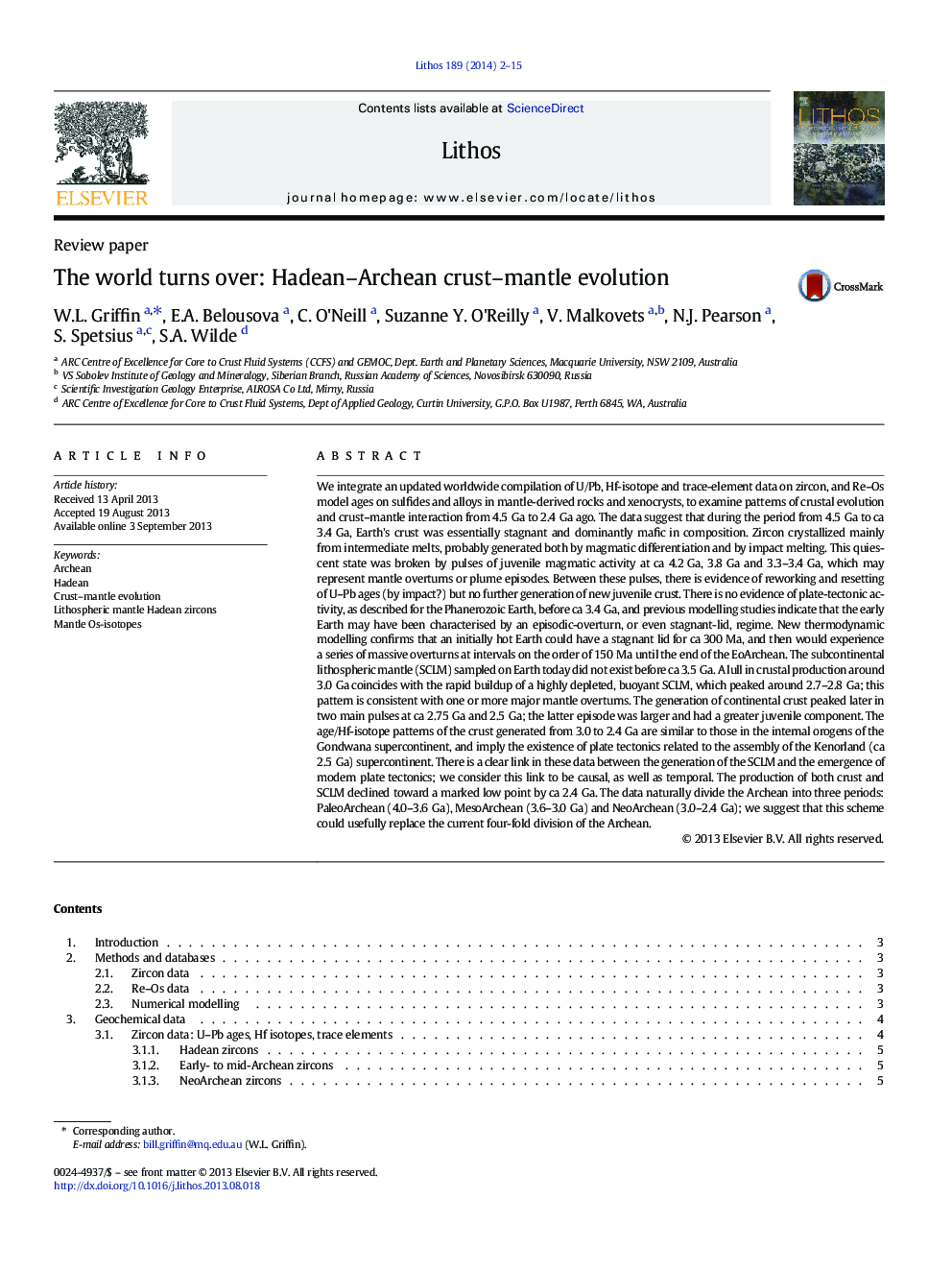| Article ID | Journal | Published Year | Pages | File Type |
|---|---|---|---|---|
| 4716100 | Lithos | 2014 | 14 Pages |
•The Hadean–EoArchean zircon record reflects three major crustal-generation events.•Hadean–Archean tectonics dominated by mantle overturns at 150–300 Ma intervals.•The SCLM formed between 3.2 and 2.8 Ga by high-degree melting in mantle overturns.•The Archean–Hadean can be reduced to four periods, reflecting major tectonic events.
We integrate an updated worldwide compilation of U/Pb, Hf-isotope and trace-element data on zircon, and Re–Os model ages on sulfides and alloys in mantle-derived rocks and xenocrysts, to examine patterns of crustal evolution and crust–mantle interaction from 4.5 Ga to 2.4 Ga ago. The data suggest that during the period from 4.5 Ga to ca 3.4 Ga, Earth's crust was essentially stagnant and dominantly mafic in composition. Zircon crystallized mainly from intermediate melts, probably generated both by magmatic differentiation and by impact melting. This quiescent state was broken by pulses of juvenile magmatic activity at ca 4.2 Ga, 3.8 Ga and 3.3–3.4 Ga, which may represent mantle overturns or plume episodes. Between these pulses, there is evidence of reworking and resetting of U–Pb ages (by impact?) but no further generation of new juvenile crust. There is no evidence of plate-tectonic activity, as described for the Phanerozoic Earth, before ca 3.4 Ga, and previous modelling studies indicate that the early Earth may have been characterised by an episodic-overturn, or even stagnant-lid, regime. New thermodynamic modelling confirms that an initially hot Earth could have a stagnant lid for ca 300 Ma, and then would experience a series of massive overturns at intervals on the order of 150 Ma until the end of the EoArchean. The subcontinental lithospheric mantle (SCLM) sampled on Earth today did not exist before ca 3.5 Ga. A lull in crustal production around 3.0 Ga coincides with the rapid buildup of a highly depleted, buoyant SCLM, which peaked around 2.7–2.8 Ga; this pattern is consistent with one or more major mantle overturns. The generation of continental crust peaked later in two main pulses at ca 2.75 Ga and 2.5 Ga; the latter episode was larger and had a greater juvenile component. The age/Hf-isotope patterns of the crust generated from 3.0 to 2.4 Ga are similar to those in the internal orogens of the Gondwana supercontinent, and imply the existence of plate tectonics related to the assembly of the Kenorland (ca 2.5 Ga) supercontinent. There is a clear link in these data between the generation of the SCLM and the emergence of modern plate tectonics; we consider this link to be causal, as well as temporal. The production of both crust and SCLM declined toward a marked low point by ca 2.4 Ga. The data naturally divide the Archean into three periods: PaleoArchean (4.0–3.6 Ga), MesoArchean (3.6–3.0 Ga) and NeoArchean (3.0–2.4 Ga); we suggest that this scheme could usefully replace the current four-fold division of the Archean.
